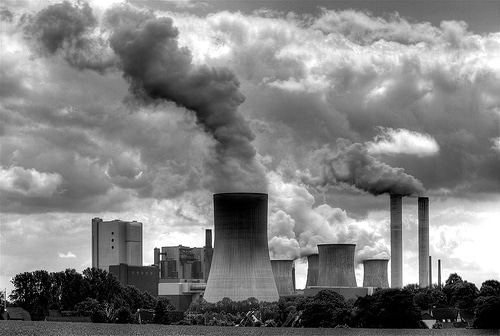After more than 20 years, the U.S. Environmental Protection Agency (EPA) has finally set federal limits on how much mercury pollution power plants can release into the atmosphere. The fact that the power industry has been able to dump unlimited amounts of mercury and other toxics into the skies (and eventually into the ocean and tuna) without penalty for so long is mind-boggling.
Unless, that is, you ask industry groups and their friends in Congress, who are already parroting the same talking points they bring out every time a new pollution control appears – despite the fact that the Clean Air Act turns out to be a bargain for America over and over again.
These new Clean Air Act rules would set a national standard for the emissions of hazardous air pollutants, including mercury, arsenic, and certain others. They would cut emissions by 91 percent and save 17,000 people from premature death each year, according to EPA administrator Lisa Jackson.
She recruited representatives from the health and medical fields – as well as the requisite group of cute and vulnerable second graders – to join her during the unveiling of the rules on Wednesday, emphasizing the substantial public health benefits, which, in addition to the environmental benefits, may tally up to $100 billion a year.
However, several industry and lobby groups, as well as Republicans in Congress, have already spoken out against the EPA standards.
“The EPA concedes that the regulation would cost $10 billion. This is likely a low ball,” asserted the conservative Competitive Enterprise Institute. “According to the Electric Reliability Coordinating Council, the price tag is as much as $100 billion.”
On the contrary, the Clean Air Act has been an incredible investment so far – proving cheaper and more effective in nearly every case.
“In the 1980s, lobbyists told us that the proposed Clean Air Act Amendments would cause, quote, ‘a quiet death for businesses across the country,’” reported EPA administrator Jackson last year. “Instead, the US economy grew by 64 percent even as the implementation of Clean Air Act Amendments cut acid rain pollution in half.”
The cost projections for the first phase of the Clean Air Act’s acid rain program were $2.4 to $5 billion a year. In fact, studies show it only ended up costing $836 million (not billion) a year. Quite the deal in exchange for precipitation that doesn’t, for example, melt the faces off statues of important historical figures.
Yet, industry trade groups such as the Electric Reliability Coordinating Council, the National Mining Association, and the National Association of Manufacturers have already issued statements forecasting job losses and an impending rise in energy prices (EPA estimates them to be $3 to $4 a month after 2015).
“In addition, electric system reliability could be compromised by coal retirements and new environmental construction projects caused by this proposed rule and other EPA regulations,” said Aric Newhouse, vice president for government relations at the National Association of Manufacturers. “Stringent, unrealistic regulations such as these will curb the recent economic growth we have seen.”
Luckily for industry, they have plenty of buddies in Congress, who have already been assaulting the EPA on various fronts and could possibly take steps to block the EPA in this area as well.
“We do know many members of Congress are concerned about the economic impact of these rules, and more time will help mitigate the economic impact of making additional emission reductions,” a spokeswoman from the utility American Electric Power told the Wall Street Journal.
Industry favorite, Sen. James Inhofe (R-Okla.) has already assured industrial polluters that he’s on their side, stating, “EPA continues to propose and promulgate rules at a breakneck pace without a complete and accurate understanding of their impacts on consumers, jobs and small businesses.”
Electric utilities would have three to four years to come into compliance under the new standards, and according to the EPA, “[M]ore than half of all coal-fired power plants already deploy the widely available pollution-control technologies that allow them to meet these important standards.”
Therefore, despite the typical industry doom-saying, these Clean Air Act regulations will likely cost less than predicted, stimulate American innovation, and save lives. And all the children and tuna that normally get their mercury from coal pollution will be saying what a bargain the Clean Air Act has turned out to be.
Subscribe to our newsletter
Stay up to date with DeSmog news and alerts






